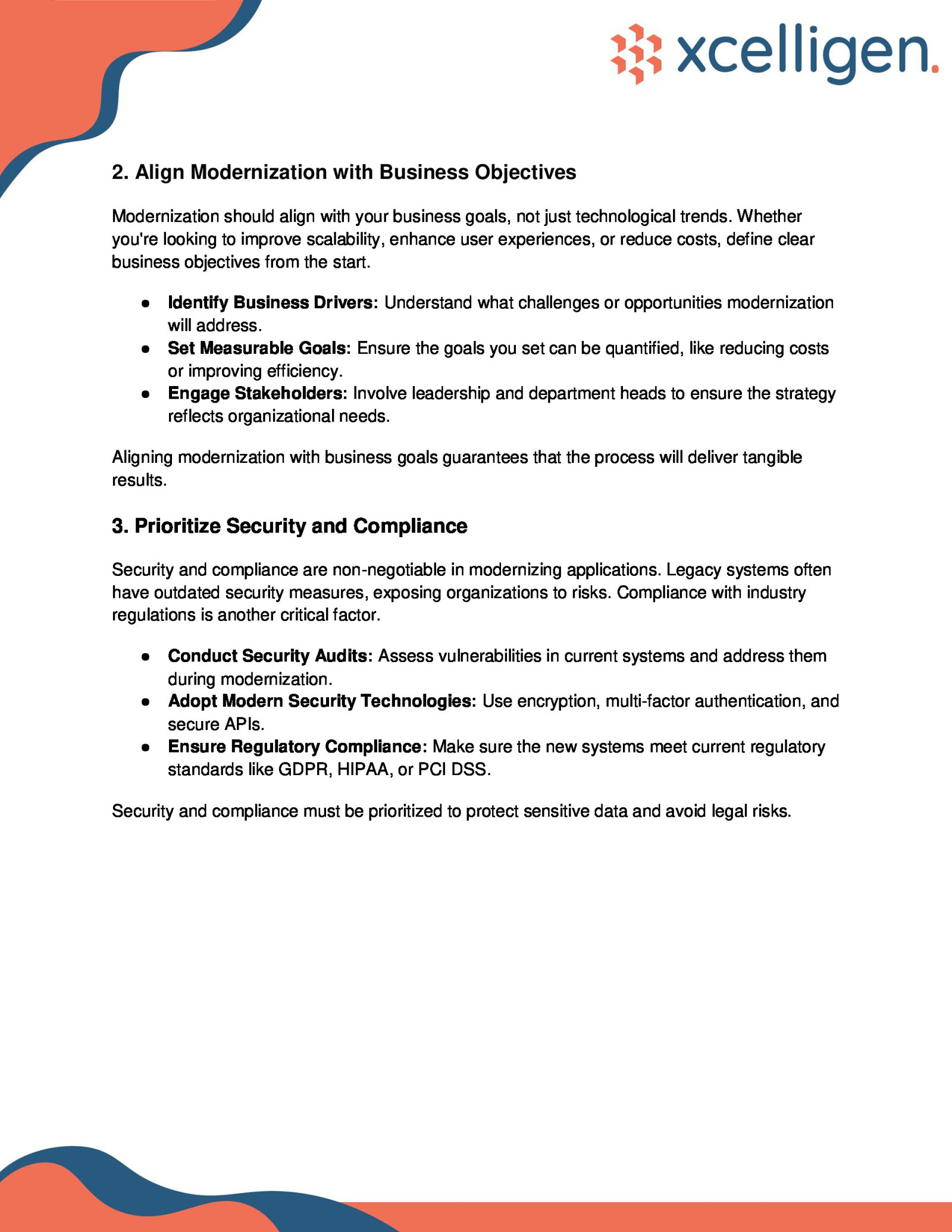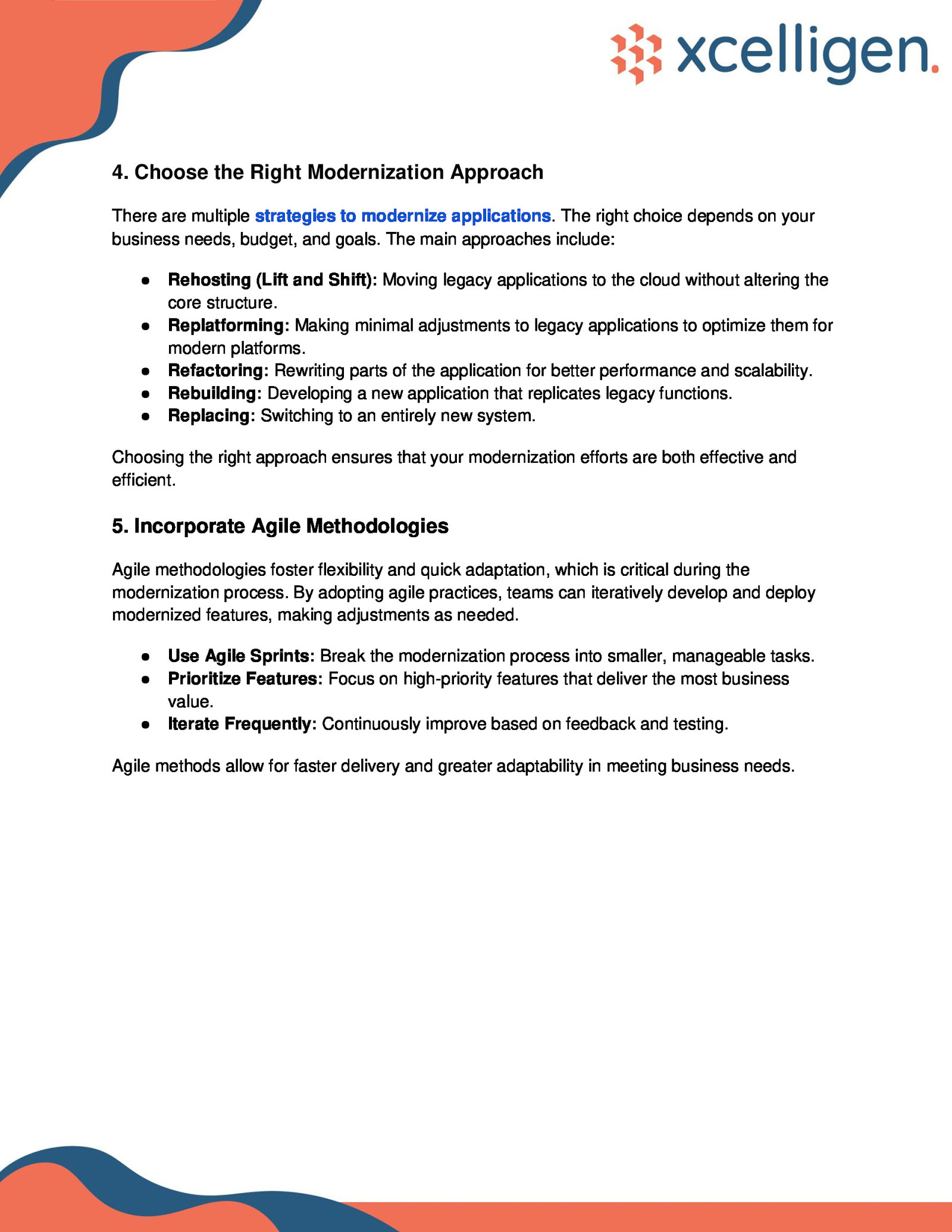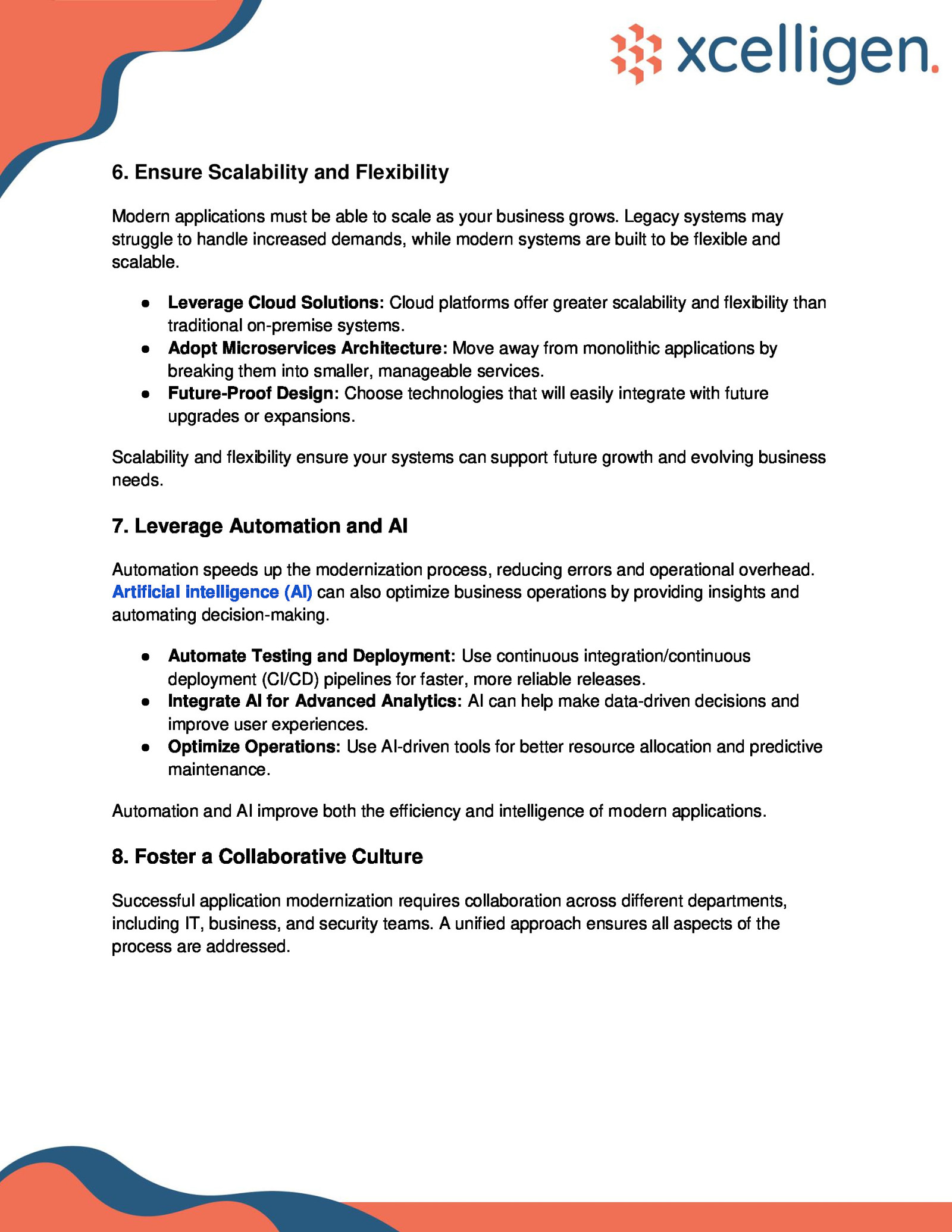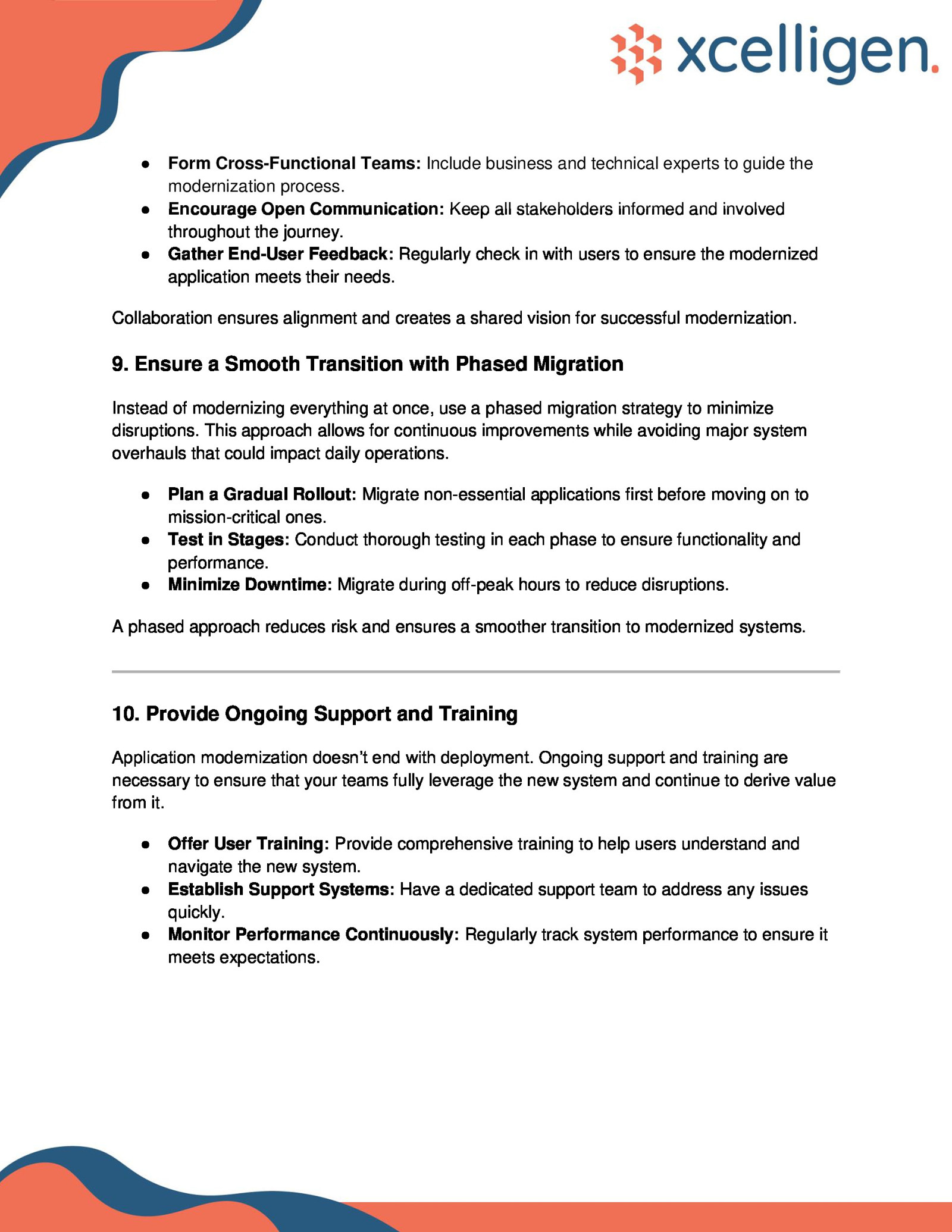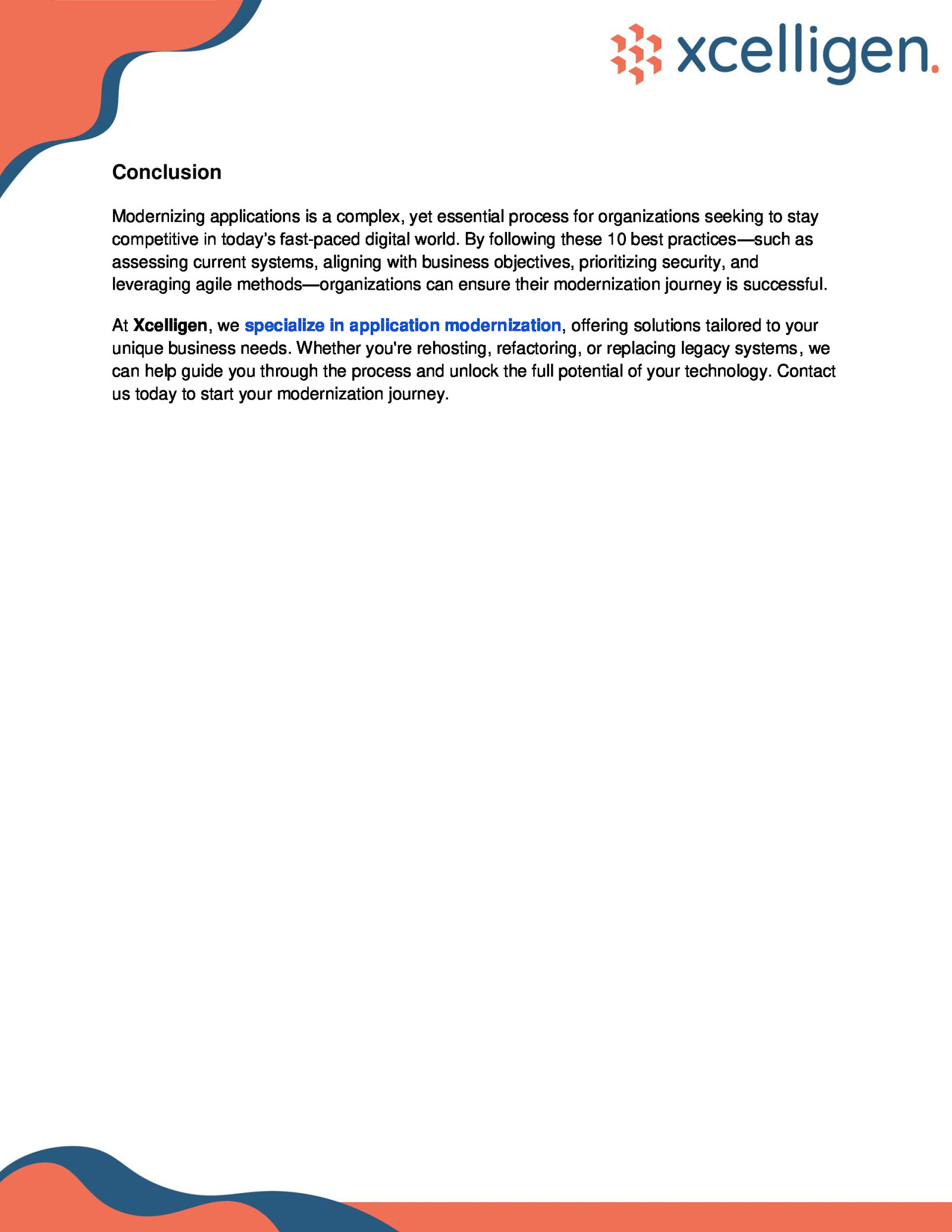10 Best Practices for Successful Application Modernization Introduction In today’s rapidly evolving digital landscape, legacy applications can hold back business growth. These outdated systems may lack the flexibility, scalability, and security needed to meet modern business needs. As organizations look to stay competitive, application modernization has become a crucial strategy. However, successfully modernizing applications requires more than just technology upgrades. It involves a strategic approach that aligns with business objectives and ensures long-term success. This guide outlines 10 best practices for ensuring a smooth and effective modernization process.
- Assess the Current State of Your Applications Start by thoroughly assessing your legacy systems. Understand what works and what doesn’t. Identify which applications need immediate attention and which can continue to serve their purpose. ● ● ● Conduct a System Audit: Review all applications in use and evaluate their performance. Evaluate Maintenance Costs: Understand the cost of maintaining legacy systems. Analyze Business Impact: Prioritize applications that are vital to business functions and customer service. This initial step helps you determine where modernization efforts will have the most impact.

